The Indian man who chases fires
- Published
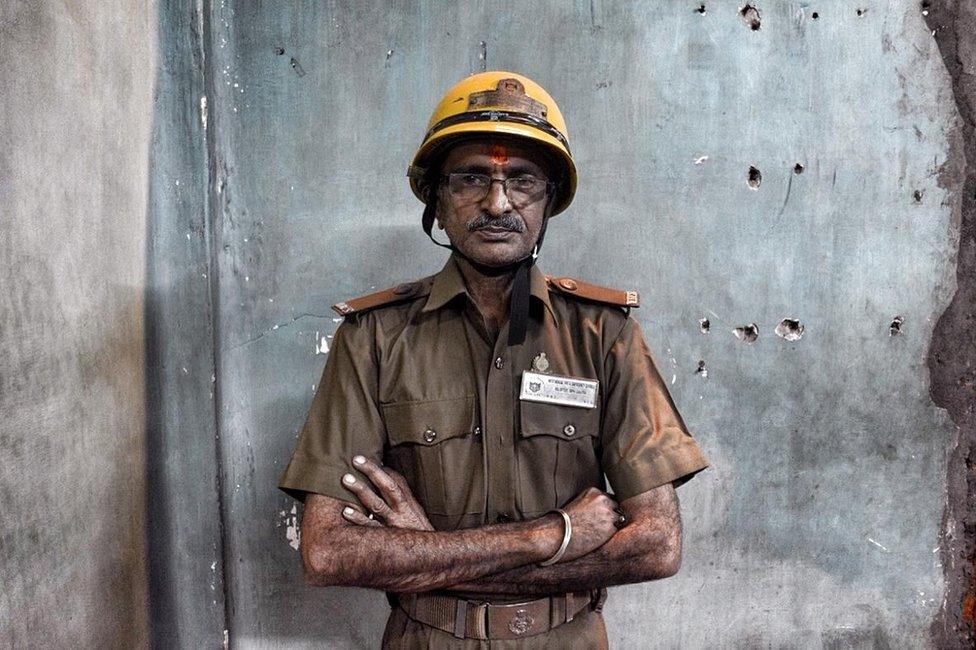
Bipin Ganatra is not a professional fireman
"A fire talks to you," says Bipin Ganatra, squatting in his one-room flat in the eastern Indian city of Kolkata (Calcutta).
"Fires come in red and blues. The blue ones are more lethal. And the roar tells you so much on what exactly the blaze is feeding on."
Mr Ganatra, a wiry 59-year-old man, is not a professional fireman.
The school dropout has worked odd jobs all his life - working for a jute trader, and as an electrician, fixing meters.
Other times, he has chased fires all over his city, an untidy, sprawling megapolis of 15 million people. Over four decades, he has attended to more than 100 fires - helping douse the flames, rescuing people and cleaning up debris.
"You can say, I have only one interest in life. Fires."

Unsung Indians
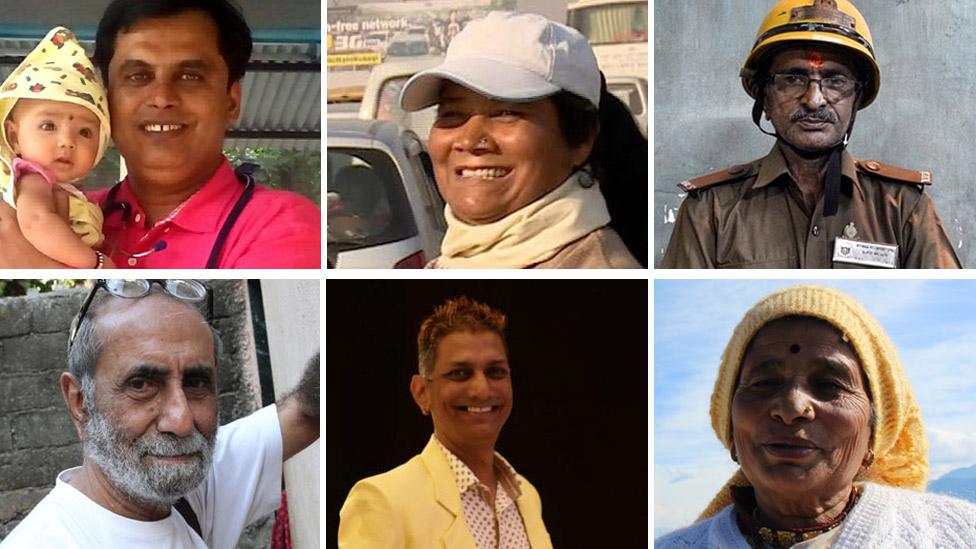
This is the sixth article in a BBC series Unsung Indians, profiling people who are working to improve the lives of others.
More from the series:
The doctor who delivers girls for free
Cancer survivor bringing joy to destitute children
A messiah for India's abandoned sick

Look around his tiny flat, and you realise the austere bachelor is telling the truth.
In one corner, sits a creaky and bare Formica-topped table and an odd-shaped chair. A small TV is mounted on a sooty blue wall. A low wall with freshly cemented edges partitions the room.
Across the wall are his other possessions: certificates and awards he has received for his work displayed tidily in an alcove, a small steel cupboard with a round mirror, and a blue bucket stuffed with bananas and medicines - vitamins, tablets for his gastric problems, sleeping pills.
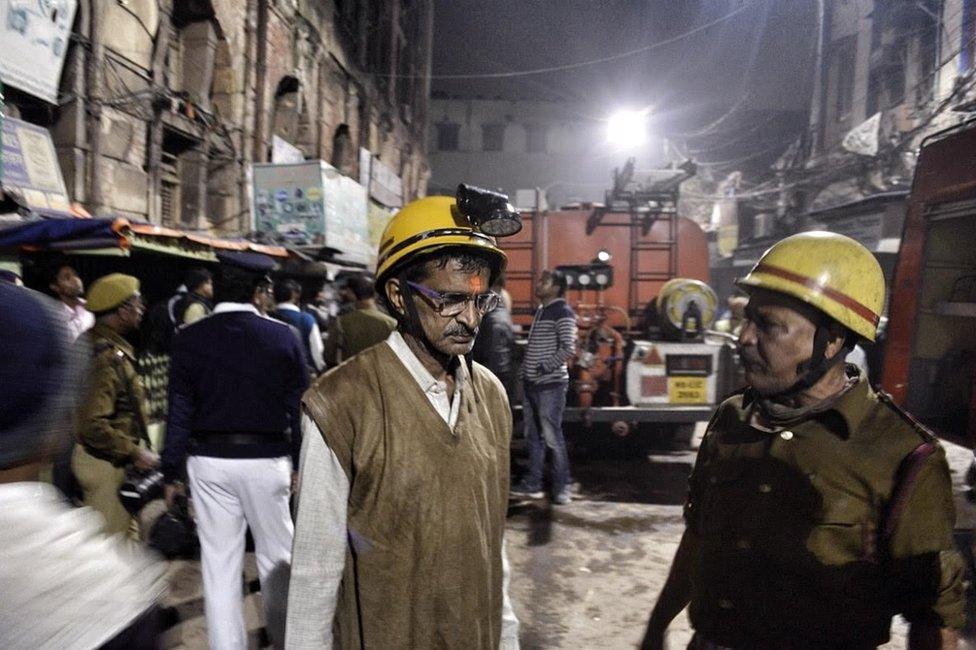
Mr Ganatra has attended to more than 100 fires
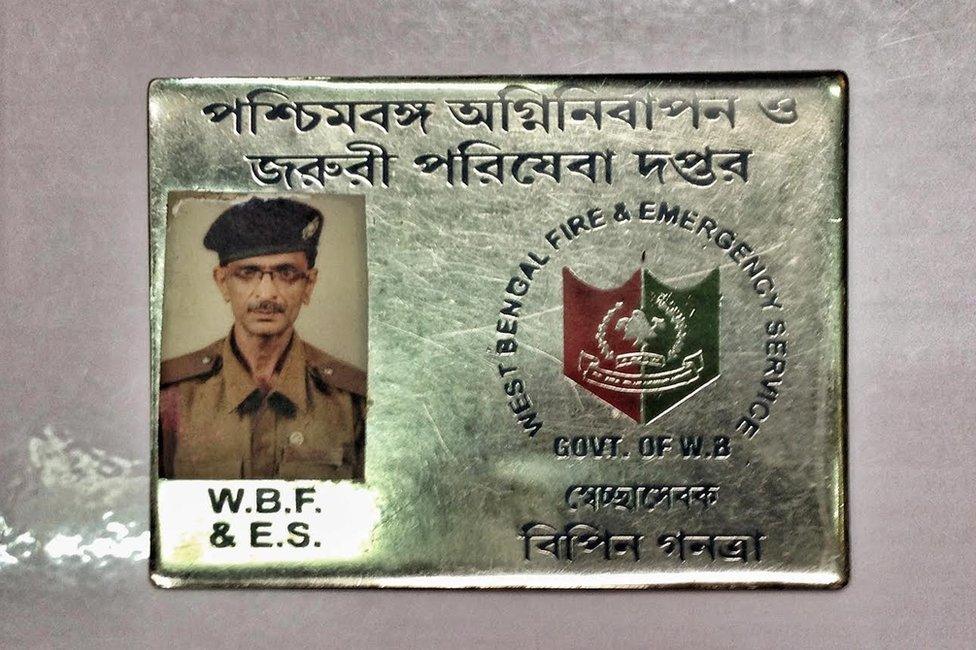
Mr Ganatra has been provided with a rare volunteer's steel ID card
Mr Ganatra doesn't sleep much. He hunts fires by watching news on his TV - gifted by friends - all day and night. Whenever news breaks of a blaze, he calls up the fire brigade headquarters, gets into a taxi and goes to the site.
Kolkata is a city of fires. A total of 347 people died and 1,749 were injured in some 2,000 fires in 2014. Last year, there were more than 1,600 fires, leaving 143 people dead and 974 injured.
No wonder the city's 1,258 firemen are among the most overworked in India. Mr Ganatra is also seldom out of work - he has attended to as many as three fires in a single day.
'Brave man'
"He's a very spirited and brave man. For someone who has no formal knowledge of fire-fighting, he does a very good job. He is like a guide to our firemen, and he uses our equipment. He works almost like a professional now," says Gour Prasad Ghosh, the city fire service chief.
As a child, Mr Ganatra would get all worked up whenever he heard the frantic, clanging bell of the speeding shiny red fire engines. He would run out of the door, chase the engines struggling to make their way through congested thoroughfares and lanes, and somehow manage to reach the scene.
"There my body language would change. I would watch the firemen do their work, offer help, hang around. It would give me a huge kick."
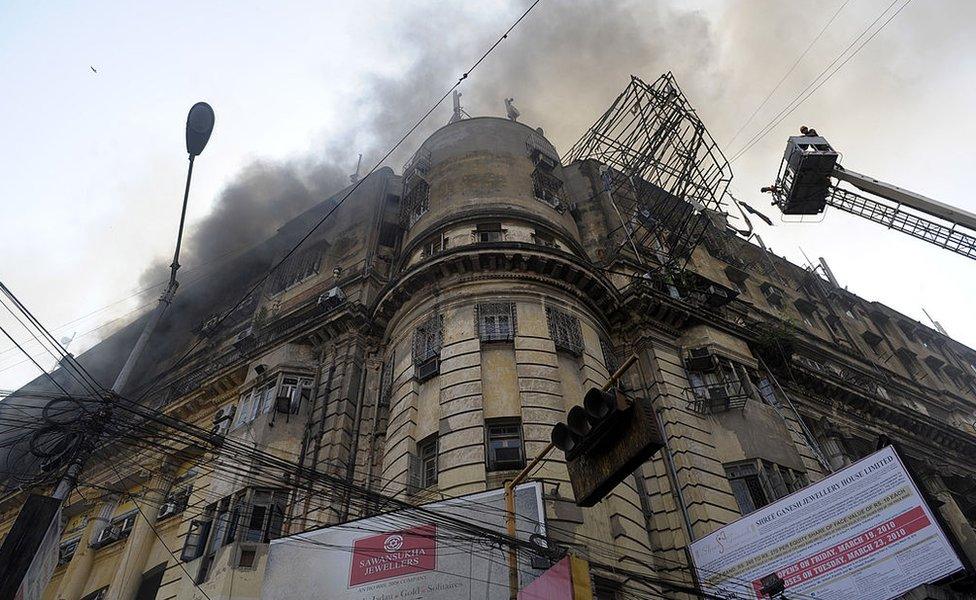
More than 24 people died in the fire at the Stephen Court building in 2010
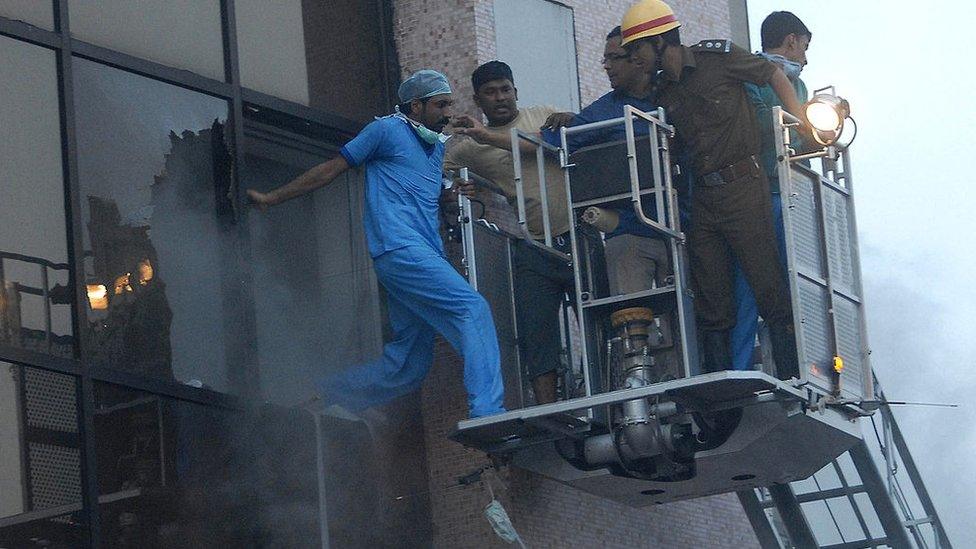
The deadly AMRI hospital fire in 2011 claimed 89 lives
Mr Ganatra was working as a mechanic in a city school in 1976 when he heard that a big bank in the office district was on fire.
He slipped out during the recess and ran to the fire scene. There, he helped carry water pipes from the scene to a pond in the neighbourhood and checked them for leaks.
"I still remember a scene vividly from the fire. The bank manager ran out of the building that was on fire, stopped, remembered he had forgotten something, ran back in - and never returned."
The fire chaser hasn't looked back since.
When a gas tanker keeled over on the city's iconic Howrah bridge in the early 1990s, he helped the firemen navigate the traffic to ensure nobody smoked.
When a four-storey building caught fire on Canning Street, he managed to persuade a pregnant woman not to jump off the terrace, ran up and helped the firemen make an improvised stretcher to ship her 10ft across to an opposite roof.
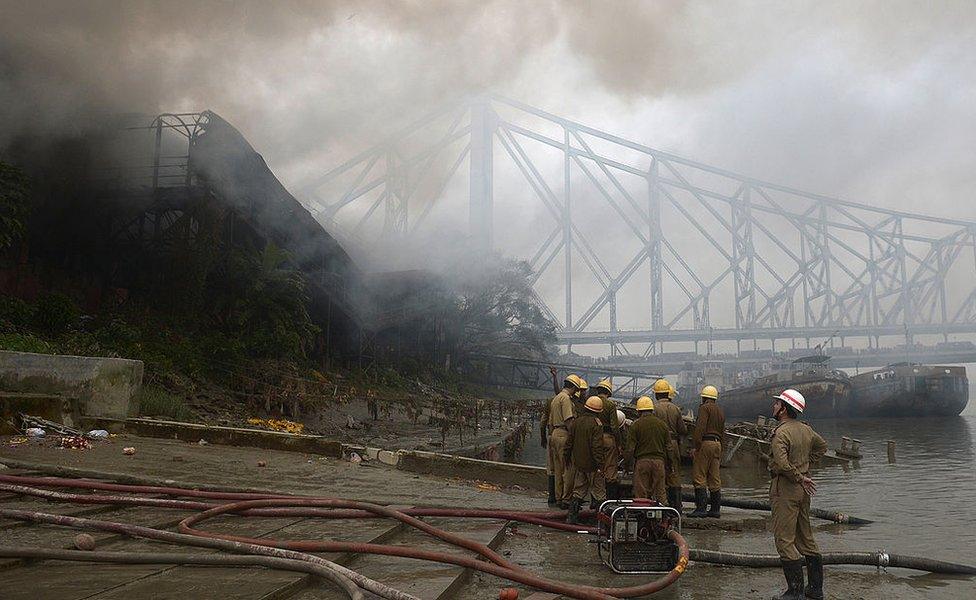
There were more than 1,600 fires in Kolkata in 2015
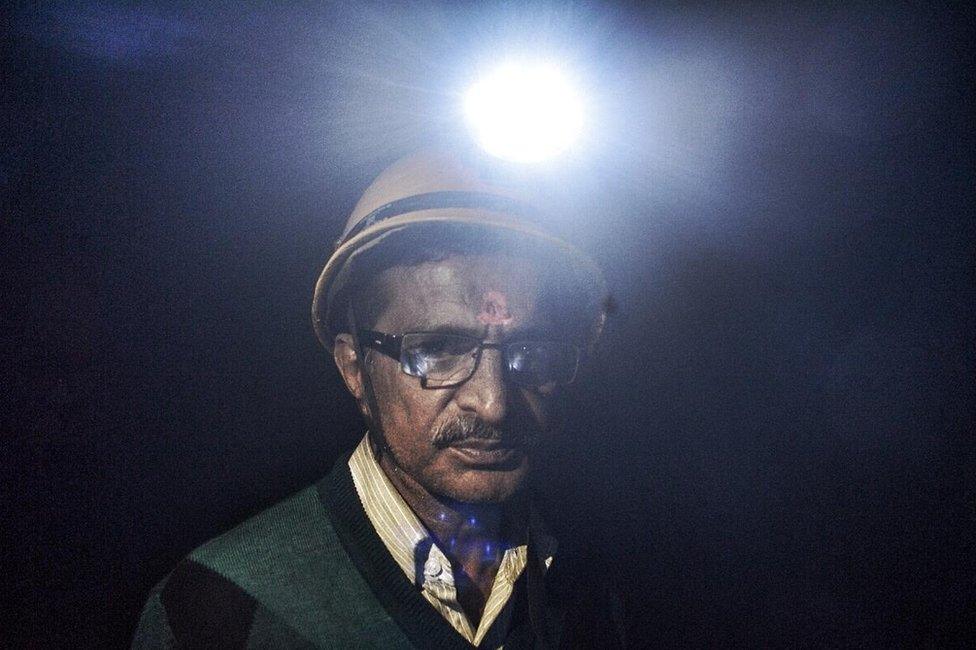
Mr Ganatra is a part-time electrician
Mr Ganatra almost lost his life five years ago when he went into a burning warehouse on Strand Road.
He had hauled out two 15kg gas cylinders from the place and re-entered with a hosepipe. Then he saw a 30ft wall crumble and couldn't let go off the live hosepipe as it would have ricocheted in his face.
On the way out, a tin shed collapsed on him, trapping him in the debris for close to two hours.
"The firemen outside thought I was dead. I had passed out and escaped with some bruises and recovered quickly in hospital. I was very lucky."
The battle with fire is always a tough one, and sometimes the flames win overwhelmingly, leaving Mr Ganatra and his fellow firemen to pick up the dead.
When the city's historic six-storey colonial Stephen Court building caught fire, external in 2010, he climbed to the first floor to persuade the people trapped on the upper floors not to jump off the building.
"I kept shouting to this man from the third floor not to jump, and wait a bit for help. Then I heard a blunt thud and saw blood squirting all over.
"I remember picking up the body of a charred woman. She had an Indian Airlines ID card around her neck. Sometimes the strangest things survive in a blaze.
"I became a collector of bodies, some charred, some crushed. Everywhere there was the smell of death." More than 40 people died , externalin the inferno.
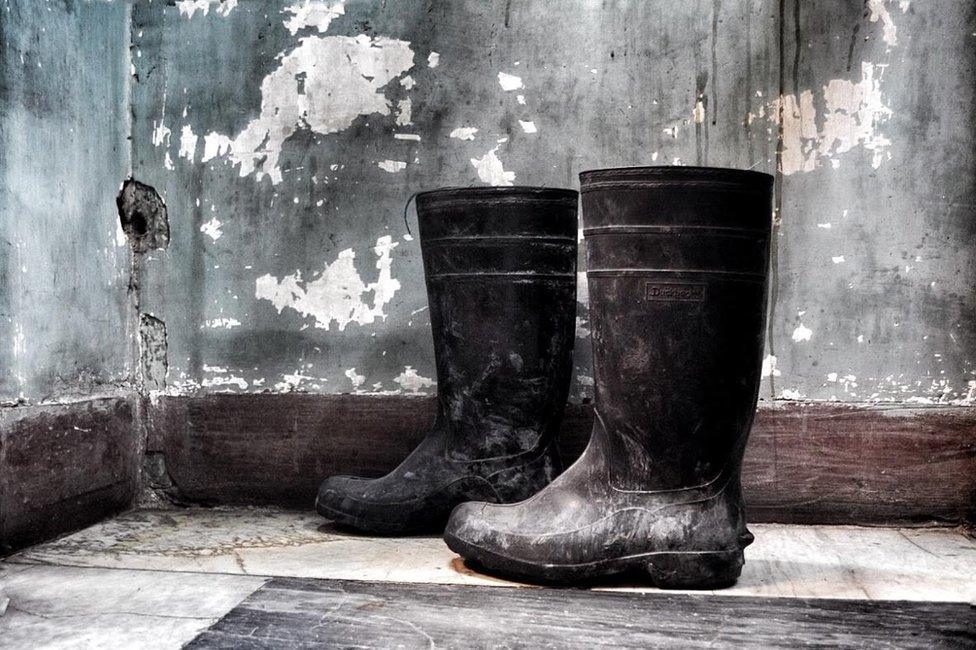
Mr Ganatra's fireman shoes
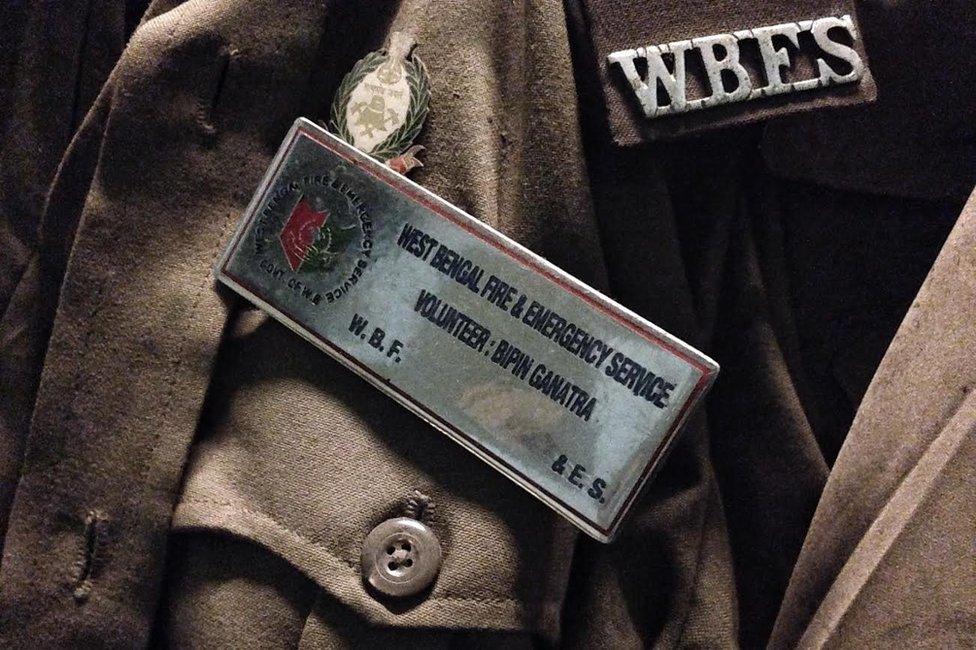
...and his volunteer's badge
A hospital fire in 2011, in which 89 patients died, was similarly traumatic.
Mr Ganatra had run up four floors through a smoke-filled stairwell, choking and vomiting. Looking for survivors, he found one.
"All I found were patients, who had fallen off the beds and died in the ICU. In the smoke-filled wards I saw six to seven bodies, on the floor, on the bed."
But there's no time to think of all this when the breaking news scrawl on TV announces a new fire in the city.
Mr Ganatra will slip into a 21-year-old khaki uniform gifted by a fire official, put on his yellow plastic hat and safety torch bought by friends, pick up a heavy metallic volunteer identity card, presented by a former minister, and head out to the scene.
The solitary man of modest possessions and a grand obsession gets by with a little help from his friends - they give him 2,500 rupees ($36; £26) every month.
Across the city, it is business as usual, as Mr Ganatra reaches a fire scene.
"I listen to the fire, and then I take her on. I pick up the hose. When the fire blows in my direction, I fall on the floor and let it blow over.
"You can never outrun the beast, you never can. You can only try to tame it."